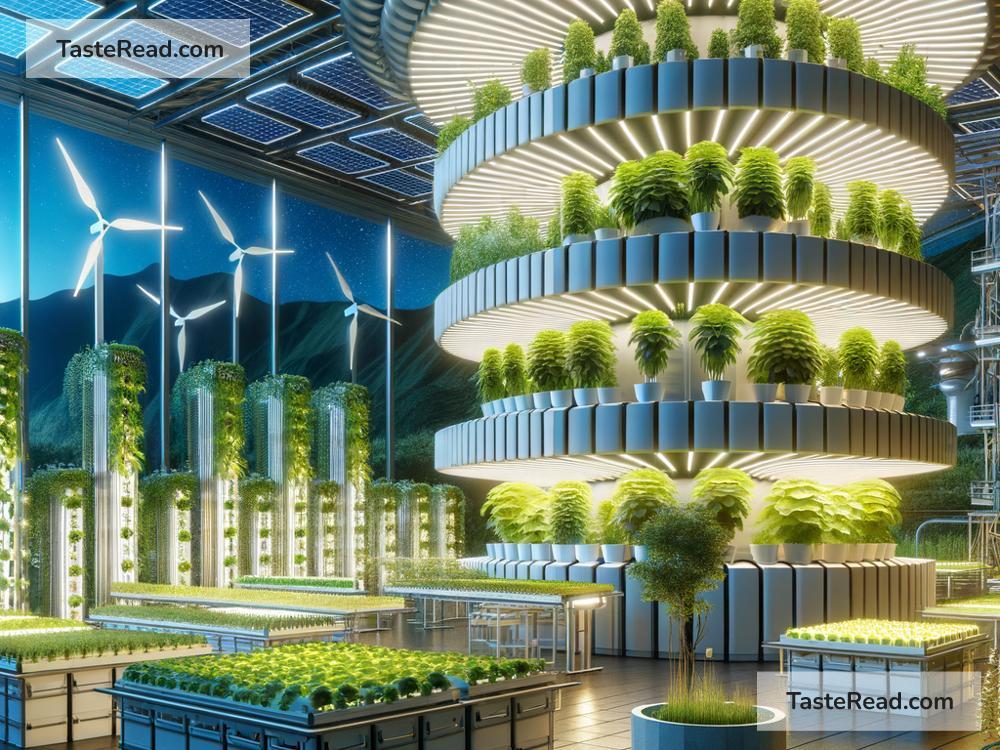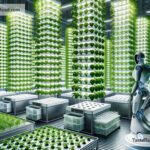The Future of Hydroponics: Growing Food Without Soil
Hydroponics is changing the way we grow food. This soil-free farming method, where plants are grown in water mixed with nutrients, has become a sustainable and efficient alternative to traditional agriculture. As the world faces challenges like population growth, climate change, and limited farmland, hydroponics offers a solution that might shape the future of food production.
Why Hydroponics Is Important
There are many reasons why hydroponics is gaining attention. First, it uses far less water than regular farming. Traditional agriculture wastes a lot of water because it seeps into the ground or evaporates. Hydroponics circulates water directly to the plant roots, so almost nothing is wasted. In fact, studies show that hydroponics can use up to 90% less water.
Second, hydroponics doesn’t require soil. This is a big deal because fertile farmland is becoming scarcer. Erosion, deforestation, and urbanization are making it harder to find good soil for farming. With hydroponics, food can be grown almost anywhere—even indoors, on rooftops, or in areas with poor soil.
Finally, hydroponics allows plants to grow faster and produce higher yields. Since plants get an exact dose of nutrients and optimal conditions, they don’t have to work hard to find food. Everything they need is delivered straight to their roots. As a result, hydroponics farms can produce more food in less time compared to traditional farms.
Why Hydroponics Is Perfect for a Changing World
The world is facing tough challenges. The population is expected to reach nearly 10 billion by 2050, meaning we’ll need to produce more food than ever before. At the same time, climate change is disrupting weather patterns, causing droughts, floods, and unpredictable growing seasons. Hydroponics offers a way to grow food sustainably, even in these difficult conditions.
One exciting thing about hydroponics is that it can be used in places where farming was impossible before. For example, desert countries like Saudi Arabia and the United Arab Emirates are now using hydroponic systems to grow fresh vegetables despite having almost no arable land. Hydroponics is also popular in big cities, where urban farms are popping up in warehouses, basements, and rooftops. This allows fresh food to be grown closer to where people live, reducing transportation costs and carbon emissions.
Innovations Shaping the Future of Hydroponics
As science and technology continue to evolve, hydroponics systems are becoming more advanced and efficient. Here are a few trends to watch:
-
Automation and AI: Modern hydroponic farms are using sensors, artificial intelligence (AI), and automation to monitor and control growing conditions. With smart technology, farmers can adjust nutrient levels, temperature, and lighting to maximize plant growth, all from their smartphones or computers.
-
Vertical Farming: Vertical farming is a type of hydroponics where crops are grown in tall stacks, saving space and maximizing yield. Imagine a skyscraper filled with rows of lettuce and spinach instead of office desks. These vertical farms are designed to use very little water and energy while producing tons of food in small areas.
-
Green Energy Integration: Many hydroponic farms are now pairing their systems with renewable energy sources like solar panels or wind turbines. This makes the process even more sustainable, reducing dependency on fossil fuels and cutting down on emissions.
-
Waste Recycling: New techniques are helping hydroponics farms turn waste, like fish tank water or compost material, into nutrients for plants. This closes the loop, creating a circular farming system that minimizes waste.
-
Community and Home Hydroponics: DIY kits and home gardening systems are making hydroponics accessible to everyone. Families can now grow fresh herbs, fruits, and vegetables in their apartments or backyards. This promotes food security and teaches people about sustainable practices.
Challenges to Overcome
Hydroponics is exciting, but it still faces challenges. One major issue is cost. Building and maintaining a hydroponic system can be expensive, especially when using advanced technology. For small farmers or communities with limited resources, this can be a barrier.
Another challenge is energy use. While hydroponics saves water, it still requires electricity to run pumps, lighting, and climate controls. Innovations in energy-efficient systems can help reduce this impact, but progress is still needed.
Additionally, educating people about hydroponics is important. Many farmers and consumers are unfamiliar with this method and might be hesitant to try it. Governments, schools, and nonprofits can play a role in spreading awareness and offering training.
Looking Ahead
The future of hydroponics is bright. As technology advances and costs drop, we’ll likely see more hydroponic farms around the world. Urban areas will benefit greatly, offering fresh locally-grown food while reducing reliance on long-distance supply chains. Rural areas, especially those with poor soil or limited water, will also benefit from this innovative approach.
In the next few decades, hydroponics could become a standard part of global food production. It offers a sustainable way to grow nutritious food, reduce waste, and protect the planet. While it’s not a complete replacement for traditional farming, it’s an excellent tool to help meet future challenges.
Final Thoughts
Hydroponics is more than just a clever way to grow plants—it’s a glimpse into the future of agriculture. As the world continues to change, hydroponics provides hope for a food system that is efficient, adaptable, and sustainable. Whether on rooftops in crowded cities or in the deserts of the Middle East, hydroponics is paving the way for a healthier and greener tomorrow.


